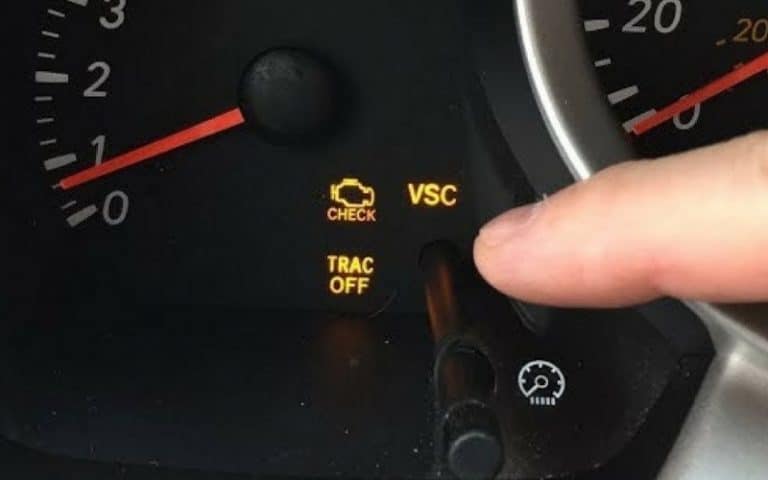The Vehicle Stability Control (VSC) light on your Toyota dashboard is not just another indicator; it’s a vital component that can significantly influence your driving experience. Encountering this light can be disconcerting, as it often signals that something might be amiss with your vehicle’s handling or overall stability. But fear not—understanding the causes and solutions can empower you to address this issue effectively.
Decoding the VSC Light
At its core, the VSC system is designed to enhance your vehicle’s stability while driving, especially in adverse conditions or during abrupt maneuvers. When the VSC light illuminates, it usually stems from one of three scenarios: a fault within the VSC system, a problem with the vehicle’s traction control, or an issue with the anti-lock braking system (ABS). Learning to decode this signal is the first step toward resolution.
Common Causes of VSC Light Activation
Let’s delve deeper into what might trigger this light. Occasionally, it’s a relatively benign indication—such as incorrect tire pressure or a simple fault in the system—but it can also be a precursor to more complex mechanical issues.
- Tire Issues: Improperly inflated or mismatched tires can send signals to the VSC system. This means that ensuring your tire pressure is within the recommended specifications is paramount.
- Traction Control System Failure: If your vehicle’s traction control system detects slippage or loss of grip, it activates the VSC light as a warning to assist in regaining control.
- ABS Malfunction: The VSC system collaborates with the ABS. A malfunction in the ABS can inadvertently trigger the VSC light as well.
- Sensor Issues: Various sensors play a crucial role in monitoring vehicle dynamics. A faulty wheel speed sensor or a malfunctioning stability sensor can illuminate the VSC warning.
Initial Steps for Troubleshooting
If the VSC light starts shining in your Toyota, the first approach is to conduct a thorough examination of your vehicle. Start with these initial steps:
- Check the Tire Pressure: Use a reliable tire pressure gauge to verify that all tires are within specified limits. Adjust as necessary.
- Inspect Tires and Wheels: Look for any visible signs of damage, wear, or uneven tread. A professional inspection may be warranted.
- Consider Recent Changes: Reflect on any recent repairs or modifications. Sometimes, aftermarket parts may not integrate well with the VSC system.
Tools of the Trade: Diagnostic Scan
For a more thorough investigation, employing a diagnostic scan tool can provide invaluable insights. These tools read the Diagnostic Trouble Codes (DTCs) stored in your vehicle’s computer, pinning down the underlying issues more accurately. Understanding these codes can point toward the precise nature of the VSC malfunction and guide you toward the appropriate repairs.
Professional Intervention
In many instances, the resolution of the VSC light might require professional intervention. Mechanics equipped with specialized knowledge can quickly diagnose and remedy the underlying cause. For instance, repairing or replacing faulty sensors, recalibrating systems, or even rectifying issues associated with the ABS may be necessary to restore normal functionality. Think of this as a deep dive into the very mechanics that help ensure your safety on the road.
Preventative Maintenance: A Safer Tomorrow
While it’s vital to address the illumination of the VSC light promptly, implementing a regime of preventative maintenance can help mitigate the chances of encountering this issue again in the future. Routine inspections of tires, brakes, and sensor systems are invaluable. Regular fluid replacements and part inspections will keep your vehicle in prime condition.
Understanding VSC in Diverse Conditions
A fascinating aspect of the VSC system lies in its functionality across different driving conditions. Have you ever wondered how it operates in truly adverse weather—like rain or snow? In these scenarios, the VSC system works diligently to maintain optimal traction, using dynamic adjustments to braking and acceleration. This active engagement can be life-saving, particularly in scenarios where a driver is faced with unexpected skids or hydroplaning.
Conclusion: Reframing Your Understanding
The VSC light on your Toyota isn’t merely an annoyance; it’s a critical communicator that can prompt introspection about your vehicle’s stability and safety features. Embracing this understanding could very well transform your driving experiences, motivating you to maintain your vehicle more diligently and keep it performing at its peak. When the VSC light illuminates, consider it not just a warning, but also an invitation to engage with your vehicle’s intricate systems, ensuring smoother, safer travels ahead.
